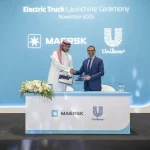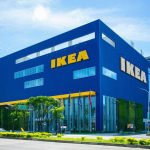Samsung Enters Global Carbon Capture Market with E&A – Carbon Clean Alliance

- The partnership introduces modular carbon-capture systems capable of removing up to 100,000 tonnes of CO₂ per unit each year.
- Compact, pre-fabricated units aim to reduce installation time, cost, and site disruption, helping accelerate industrial decarbonisation.
- The collaboration reflects a shift toward standardised, financeable carbon-capture infrastructure across hard-to-abate sectors.
Global Partnership Targets Hard-to-Abate Sectors
In Seoul and London, Carbon Clean and Samsung E&A announced a strategic alliance to deliver modular, scalable carbon-capture systems designed for industrial and energy applications. The companies plan to combine Carbon Clean’s patented CycloneCC™ technology with Samsung E&A’s engineering, procurement and construction (EPC) capabilities to lower the cost and complexity of large-scale deployment.
The alliance integrates Carbon Clean’s advanced solvent and rotating packed-bed technologies with Samsung E&A’s AHEAD execution model, which uses off-site construction, early design automation, and faster project delivery. Together, they aim to make carbon capture accessible to sectors that have historically faced steep barriers to decarbonization, such as cement, steel, refining, and chemicals.
Smaller, Faster, and More Scalable
At the centre of the partnership is the CycloneCC™ C1 Series—a compact, column-free carbon-capture system that is up to 50 percent smaller and ten times more compact than traditional installations. The design reduces height by 70 percent and steel use by 35 percent, while each unit can capture up to 100,000 tonnes of CO₂ per year. The modular format allows rapid replication across multiple sites, bringing down project timelines and enabling faster emissions reduction.
By combining Samsung E&A’s EPC expertise with Carbon Clean’s technology, the partnership aims to standardise carbon-capture solutions in the same way solar and wind projects have been systematised through modular engineering. That shift toward repeatability and cost reduction could accelerate adoption across industries under growing pressure to meet emission-reduction targets.
A Path to Bankable Carbon Capture
For investors and policymakers, the collaboration addresses two long-standing challenges: high project cost and lengthy installation timelines. Modular carbon-capture systems, when paired with a reliable EPC model, could move the technology from custom-built projects to more predictable and financeable infrastructure assets.
Carbon Clean’s Chair and CEO, Aniruddha Sharma, said the partnership aims to make carbon capture “as standard and repeatable as solar and wind deployment.” Hong Namkoong, CEO of Samsung E&A, described the alliance as an opportunity to “advance practical solutions for a sustainable future,” combining breakthrough modular design with engineering scale.
For the C-suite and investors, this evolution offers clearer pathways for investment return, improved project bankability, and reduced risk. As more regions introduce carbon-pricing mechanisms and industrial-emission limits, standardised modular systems could become a preferred compliance and investment tool.
RELATED ARTICLE: Samsung Electronics To Invest Over $5 Billion As It Targets Net Zero By 2050
Scaling Deployment Through Global Footprint
Samsung E&A’s track record across more than 1,500 global projects gives the partnership access to established industrial markets in the Middle East, Asia, North America, and Europe. Carbon Clean’s technology, already deployed in over 30 countries, provides proof of concept for small-to-medium-scale emitters seeking immediate emissions cuts without major retrofits.
This global reach positions the alliance to meet rising demand driven by climate-policy frameworks such as the EU Net-Zero Industry Act and the US Inflation Reduction Act, both of which promote industrial decarbonisation. In developing markets, where financing and infrastructure constraints slow adoption, factory-built modular systems could offer a more practical route to compliance.
Implications for Industrial Transition
For corporate boards and sustainability leaders, the Samsung E&A–Carbon Clean partnership signals a pivotal moment in how carbon capture is integrated into net-zero strategies. The move from bespoke engineering to modular standardisation may define the next phase of industrial decarbonisation—faster to deploy, easier to finance, and more transparent to regulate.
Yet, success depends on complementary policy measures: long-term storage infrastructure, transparent verification frameworks, and efficient permitting systems. Without those in place, even modular technology will face scaling limits.
Still, as industries worldwide confront tightening emissions mandates, the alliance between Samsung E&A and Carbon Clean demonstrates a tangible step toward cost-efficient, repeatable, and globally deployable carbon-capture solutions—marking a shift from pilot projects to scalable industrial transformation.
Follow ESG News on LinkedIn












